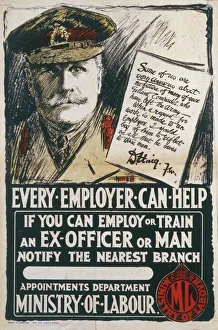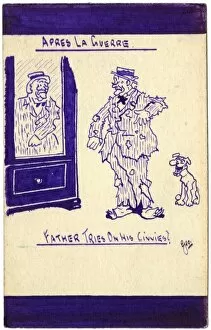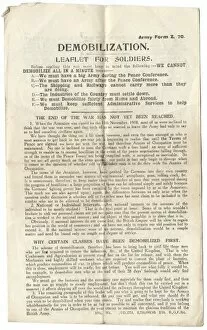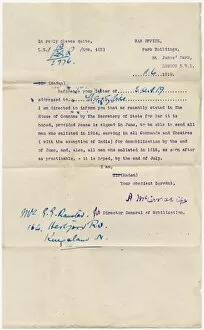Demob Collection
"Demob: Transitioning from War to Peace" Post-War Recruitment: As the dust settled after WWI
All Professionally Made to Order for Quick Shipping
"Demob: Transitioning from War to Peace" Post-War Recruitment: As the dust settled after WWI, nations faced the challenge of demobilizing millions of soldiers and reintegrating them into civilian life. Demobilisation after WWI: The process of demobilization began, marking a significant turning point in history as soldiers returned home and sought to rebuild their lives. "Your Release can be delayed with VD": A striking WWII poster reminded troops that contracting venereal diseases could prolong their release from service, urging them to prioritize their health. From Khaki to Civvies - End of WWI: After years spent in military uniforms, soldiers eagerly shed their khaki attire for civilian clothing as they celebrated the end of World War I. Football Boots Advertisement - End of WWI: With peace restored, an advertisement showcased football boots as a symbol of normalcy returning to society post-war. Troops Leaving Empire Lance at Mulberry: British Army troops stationed in Germany's Rhine region bid farewell to the Empire Lance at Mulberry, signifying their departure from active duty and imminent return home. Drawing Civilian Clothing from Clothing Depot, Olympia: At London's Clothing Depot in Olympia, Colonel C oversaw the distribution of civilian clothing to demobilized soldiers eager for a fresh start outside military garb. Gunner John Malpas' Demob Day Tomorrow: After 56 years serving his country, Gunner John Malpas eagerly awaited his demobilization day tomorrow with group number 1 – ready for a new chapter ahead. Tommy's Transformation from Khaki into Civvies upon Discharge: Witnessing Tommy change out of his khaki uniform into civilian clothes upon discharge was symbolic not only for him but also represented hope and peace prevailing over war-torn times. Plumbers among 1000 Class B Released at Olympia.
















